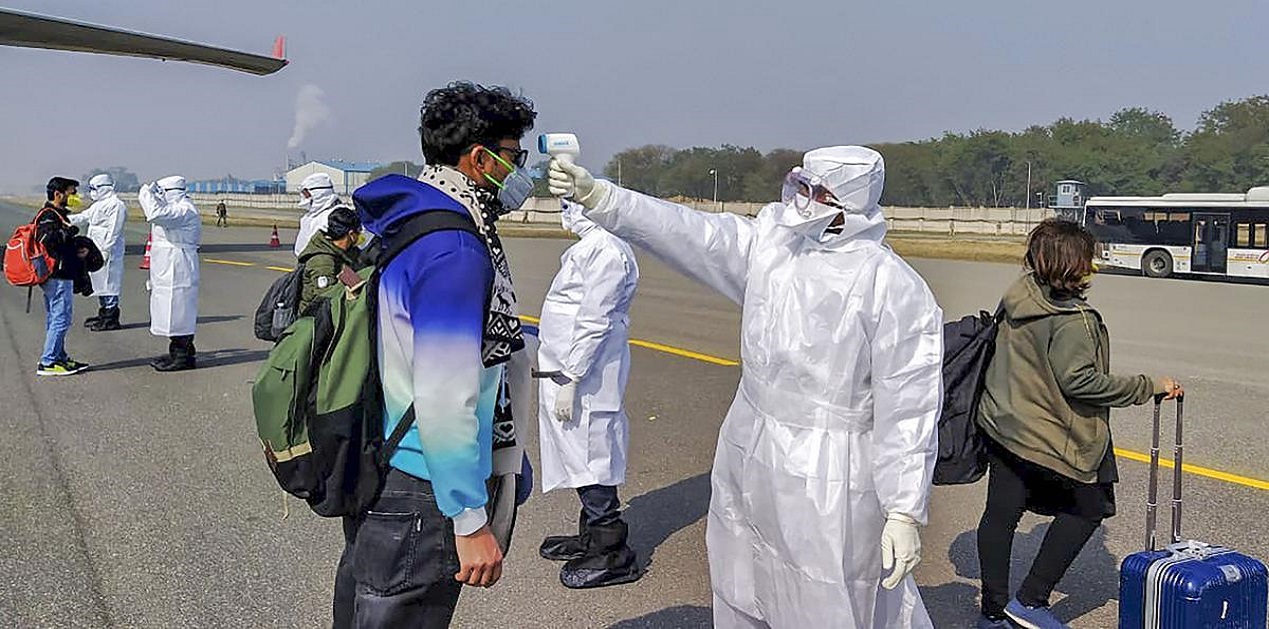Coronavirus (CoV) has caught China in its grip, China and the world are trying to grasp the effect of this virus on its population both medically as well as economically. The World Health Organisation (WHO) describes it as “a large family of viruses that cause illness ranging from the common cold to more severe diseases such as Middle East Respiratory Syndrome (MERS-CoV) and Severe Acute Respiratory Syndrome (SARS-CoV). A novel coronavirus (2019-nCoV) is a new strain which has not been identified in humans.
Most people may compare it with Severe Acute Respiratory Syndrome (SARS) which affected a total of 8,437 people worldwide becoming sick during the 2002-2003 outbreak, of these, 813 died. A total of 30 countries and two administrative regions were effected for which WHO has data. In the case of the SARS virus the WHO declared a global warning almost four months after the first case was discovered. The National Health Commission of China almost three months after the attack was maintaining the outbreak was under control, till that time only six deaths had occurred. After the declaration of the outbreak it took more than four months to get the virus under control and the WHO warning was revoked. In the SARS case the maximum number cases reported outside China were:-

India was also affected with it having a total of 3 documented cases.
The SARS virus is known to have originated in Foshan City, Guangdong Province, China and was the epicenter. Foshan City houses a population of 4.6 million (2003)1 people whereas Wuhan the known center for origination of the Corona Virus has a population 8.2 million (2019)2, the numbers are almost double of the base population. As on 11 February 2020, the number of people confirmed to be infected by the Corona Virus in China has reached 42,708 confirmed (2484 new) and a total of 1017 people had died of the disease. Outside China the number of people confirmed to be infected is at 395 in a total of 24 countries and one person has died because of it.3
Besides the health threat to the population the world over there is an economic cost of the virus which is unfolding and would affect large population untouched by the outbreak. It is early days to capture the magnitude of the loss in monetary terms but certain sectors which would be effected are tourism, aviation, transportation, hospitality sector, manufacturing and retail activity. The last two factors affecting the areas where the outbreak of the virus is highest in reality or in perception of producer/retailer/consumer.
Hubei is a province in Central China with a population of over 60 million people and serves as an important industrial and manufacturing base. The province reported a GDP of $578 billion in 2019 with a 7.8% year on year growth. In January, the local government projected a growth rate of 7.5% for the year 2020. The Hubei province in 2019, accounted for a little over 4% of the Chinese economy.
Wuhan has one of the busiest river ports in China and is at the confluence of Yangtze and the Han rivers which has ensured its growth as an industrial powerhouse owing to the logistical advantage. The city’s trade has reached US$35.3 billion in 2019, More than 300 of the world’s top 500 companies operate in the city. Wuhan is a major modern manufacturing hub for automotive, steel and iron manufacturing. Value addition of products and commodities is also done thereafter in other parts of China, thus the magnitude of the amount becomes larger.
In light of the above, the total trade of China and India in 2018 -2019 was worth $ 87.071 billion with imports from China making up $ 70.319 billion ($51.9 billion in 2019-2020 for the period of Apr to Dec) and exports to China being $ 16.752 billion ($13.05 billion in the nine months of 2019-2020)
The trend in the last two years for the exports and imports from India are4:-

Top 10 items of import from China and their value in USD billion for the period of 2018-2019 (12 months) and for 9 months of 2019-2020 (Apr to Dec 2019)

Top 10 items of Export to China and their value in USD Bn for the period of 2018-2019 (12 months) and for 9 months of 2019-2020 (Apr to Dec 2019)

The (2019-nCoV) coming at the time of the Chinese lunar year has had an effect on various industries, travel being one of them. In 2019, about 6.3 million Chinese choose to rather travel to destinations outside Mainland China. China Outbound Tourism Research Institute (COTRI) predicted that in 2020 for the first time more than seven million trips will be made across the border. More than half of all trips would go beyond “Greater China.” However more than 25,000 flights to, from and within China were canceled in the first week of February as more than two dozen airlines suspend services to the country because of the coronavirus outbreak. International capacity has fallen by 4.4 million seats a week, resulting in the “most dramatic change in schedule” in such a short time, according to OAG Aviation. The loss in seats in the international market is equivalent to the entire Indian market.5 Air India has suspended its Mumbai-Delhi Shanghai flight from 31st Jan to 14 Feb and reduced its Delhi-Hong Kong flight to three days between the same dates. Indigo airlines has suspended its flights from and to Chengdu from India from 01 Feb to 20 Feb.
The effect on tourism in India is an estimated based on the restrictions lasting 4 months (2019 Data)

In the electronics sector, consumer electronics and smartphones components are imported from China. China accounts for 75% and 85% of the total value for components for TV’s and smartphones respectively. The virus which has resulted in longer enforced holidays, factory shutdowns and suspension/reduction of cross border exchanges by Hong Kong, which undertakes Chinese freight and business has led to a 2-3% price hike in the components delaying production and raising product prices in India. 6
Another area which may be affected is the India pharmaceuticals industry because 67.56 per cent of total imports of bulk drugs and drug intermediates in 2018-19 at USD 2,405.42 million were from China and most from Hubei province and these are used for producing medicines including certain essential medicines.7
The duration of the economic effects of the virus may be a temporary phenomenon for India but the magnitude on certain industries is clear and would definitely effect the bottom line of the companies engaged in importing items for both domestic consumption as well as for re-exporting them after value addition from China. These effects would come into greater focus when the entire South Asian region is taken into account as they are dependent on China for products at lower costs for domestic consumption as well as for re-exports to other markets. In addition most of the countries in the region are dependent on Chinese capital to fund their infrastructure projects under the ambitious Chinese BRI (Belt and Road Initiative).
References
- Foshan, China Population 1950-2020. www.macrotrends.net. Retrieved 2020-02-03.
- Wuhan, China Population 1950-2020. www.macrotrends.net. Retrieved 2020-02-03.
- http://www.xinhuanet.com/english/2020-02/03/c_138751315.htm
- http://dgft.gov.in/sites/default/files/Monthly%20Bulletin%20on%20FTS%20Dec%202019.pdf
- https://www.chinatravelnews.com/article/135426
- https://economictimes.indiatimes.com/industry/cons-products/electronics/coronavirus-outbreak-china-shutdowns-hit-indian-electronics-companies/articleshow/73752743.cms?from=mdr
- http://164.100.47.194/Loksabha/Questions/QResult15.aspx?qref=2723&lsno=17
(The paper is the author’s individual scholastic articulation. The author certifies that the article/paper is original in content, unpublished and it has not been submitted for publication/web upload elsewhere, and that the facts and figures quoted are duly referenced, as needed, and are believed to be correct). (The paper does not necessarily represent the organisational stance... More >>
Image Source: https://s01.sgp1.cdn.digitaloceanspaces.com/article/135830-ggueaqtneu-1580715154.jpg










Post new comment